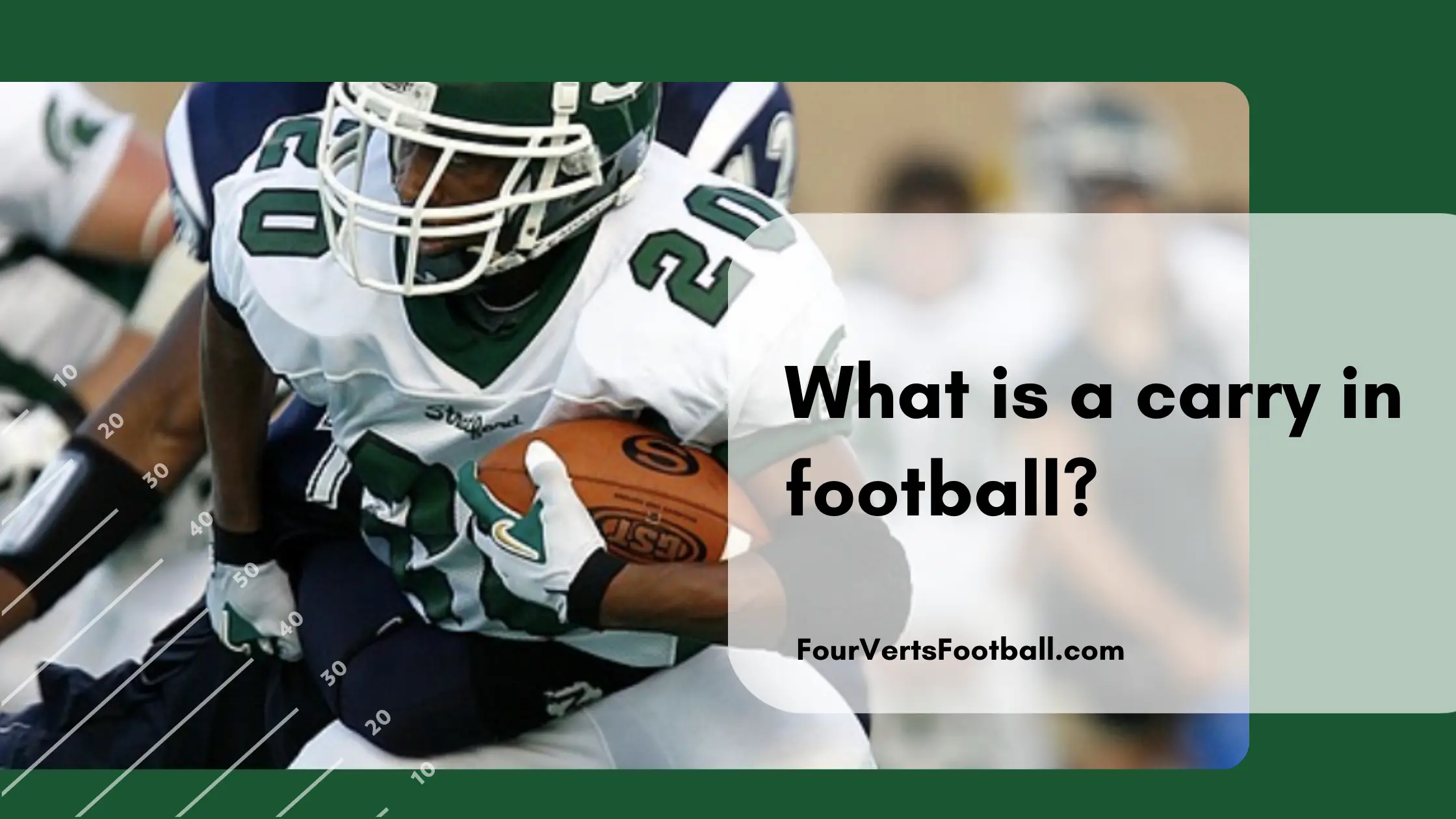A carry in football refers to a statistic that measures the number of plays in which a player rushed the ball.
Carries in football include all touches that are considered rushing the football. This means it includes handoffs as well as lateral passes.
Anytime an offensive player progresses the ball without a forward pass occurring it is considered a carry.
Carries are also counted on plays in which the ball carrier attempts to rush the ball yet does not gain any yards.
Say for example the quarterback tucks the ball and starts running towards the line of scrimmage with the intention to gain yards on the ground.
This play will now be counted as a carry whether or not the quarterback is able to gain any yards.
Once the quarterback tucks the ball and begins to run it is considered a carry. If the player loses yards it will count as negative rushing yards in his statistics.
Which positions get carries in football?
Now that you know what a carry is in football you may be wondering which position tends to receive them. Below we are going to cover some of the most likely positions to receive a carry in a football game.
Runningback
Running back is the position that almost always has the most carries throughout a game. This position is primarily used to carry the football via handoffs.
When the play starts the quarterback will often hand the ball directly to the running back so that he can gain yards on the ground.
Runningbacks will also be on the receiving end of lateral passes on some rushing plays. The handoffs and lateral passes given to running backs are what make this position the most likely to get a carry on any given play.
For the top running back on the offense a total of 10-20 carries a game is a fairly standard workload.
Quarterback
Though this position is known for passing the ball and not rushing it quarterbacks will still pick up a few carries throughout a game.
Oftentimes when a quarterback is under pressure he will decide to run with the football as opposed to throwing it.
On these plays, the quarterback will be credited with a carry once he tucks the ball and begins to run towards the opponent’s end zone. These players are usually not the best runner which often means their carries are not going to go for many yards.
Though some teams prefer to use a dual threat quarterback instead of a pocket passsing quarterback. A dual-threat quarterback is just as dangerous running the ball as he is throwing it.
Dual-threat quarterbacks can rack up a large number of carries throughout a game due to their ability to run the football.
Fullback
The fullback position has seen a large decline in popularity in recent years due to the increase of passing in football. The fullback position specializes in blocking and rushing the football.
Nowadays many teams will choose not to have a fullback on their roster. But for the teams that do these players are going to rack up some carries.
Fullbacks will primarily carry the ball in short-yardage situations. Their bulkier frames allow them to be effective in short-yardage situations while carrying enough weight to take on large defenders when blocking.
That is all on carries in football if you still want to learn more check our guide to what a target is in football or learn what time of possession is in football.

